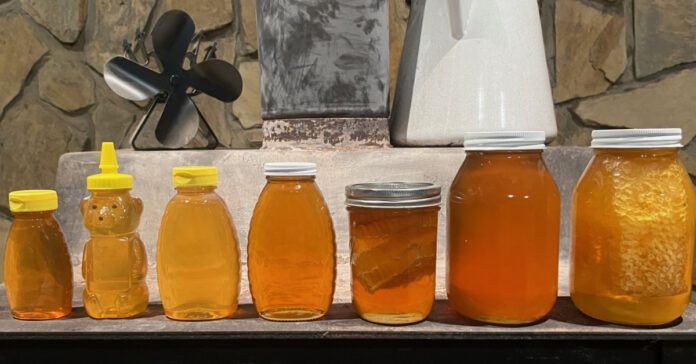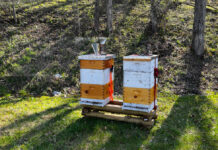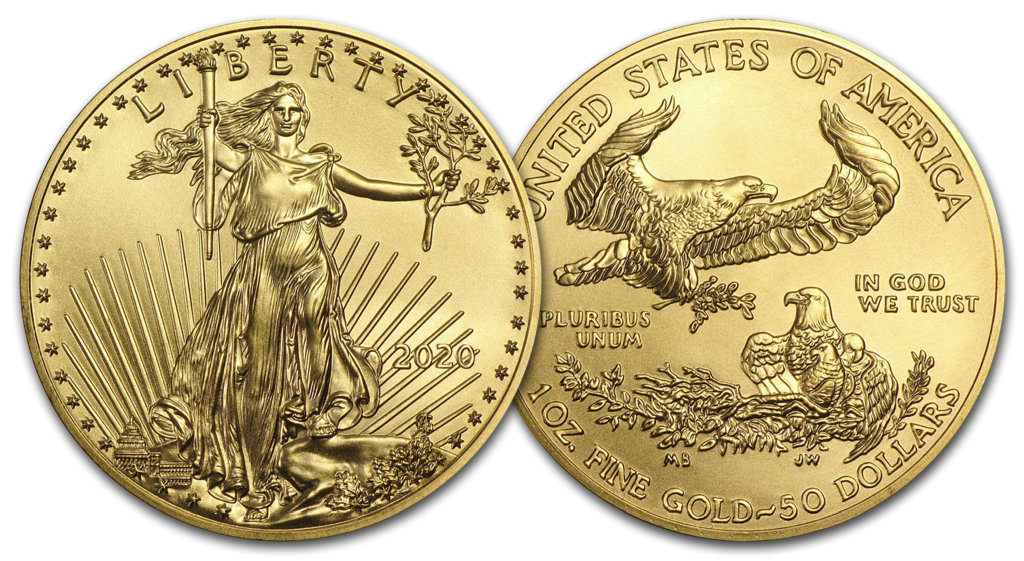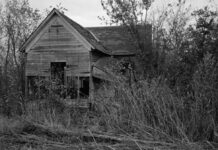
Between pulling supers off hives, de-capping the frames (which shaves off the wax capping to release the honey), spinning the frames in an extractor, clean up, and bottling, we spent three days to produce about 200 pounds of honey.
That’s less honey than I harvested over three harvests last year, but given our complete lack of a spring honey season, I am satisfied with our production. I think the bees produced most of the honey, which is a light amber, in mid-July. The darker amber variety is from August. I like the darker honey, but it’s subjective and out of the four of us who did a taste test, we split 50/50.
There were a couple of frames of very dark honey that tasted a bit like cherry cough syrup. I believe it uses nectar from cherry blossoms. We will not be selling this variety, as it isn’t the most pleasant tasting, but we will sell the other two. In fact, I have back orders I need to fill and have promised 24 jars to a local store that sells them on commission.
The hives also produced seven frames of comb honey, meaning the frames had no foundation and the honey is encased in honey comb produced by the bees. This is honey straight from the bees, and the comb is eaten as-is, or is cut into chunks and put in jars of honey. The pint and one of the quart jars in the image have comb honey in them. There is not as big a market for this honey as the wax is an acquired taste. It appeals to foodies, but here in the mountains it also appeals to traditionalists or older adults who remember cut comb from their youth.
Honey Production per Hive
While I had six hives, two of them produced half the honey, and three produced the other half. One produced no honey at all. This was the later split, and while it filled up two deep hive boxes, the bees never seemed to venture beyond the queen excluder. Had I left this split as a single deep colony, I could have gotten 30 pounds of honey from it. That is something I may consider next year when I make splits. This hive should be a strong colony going into the winter with lots of resources, so I hope it will be one of my most productive colonies next year.
This was an odd weather year, with a cold spring, a wet summer, and plants blooming at unusual times. Last year, I harvested in June. This year, I didn’t see a full frame of honey until July 10. I have to hope 2023 is the aberration and that the greater success I saw last year will be the norm.
Beekeeper friends at lower elevations (where it is warmer) had higher production than I did this year. I will have to consider whether it is worth building an out-yard at a lower elevation for some additional hives. Having hives in multiple micro climates, might smooth out the weather differences and result in a more consistent harvest. Of course, that means doubling my investment in equipment, and in a post-SHTF situation, it could be impossible to access a bee yard that is miles away.
Beekeeping for Preppers
I am a fan of beekeeping for preppers because once established, it is sustainable with little or no outside inputs; it also requires a minimal investment of time, it produces needed calories, and is suitable for barter.
200 pounds of honey is roughly 275,000 calories. To produce that many calories from eggs would require about 3,500 eggs. Of course, we have both laying hens and bees, so we have both avenues of food production covered. Two eggs and an ounce of honey provides 240 to 250 calories, a nice addition to your storage food and what your garden produces. To put it in perspective, consider two eggs and an ounce of honey can be the difference between a survival diet of 1500 and 1750 calories per day.
Honey also has an unlimited shelf life. While it can solidify, you can eat it in its crystalized state or or place the jar in warm water to re-liquefy it. If you plan to store honey for the long term, I recommend honey in glass jars as they are easier to warm. Just store them in a manner where they won’t break.
Looking Ahead
Based on my experience this year, I have decided to do the following next year (for beekeepers in this area, the beekeeping year starts on September 1):
- Monitor my hives in the late winter and early spring and feed them if the hive population grows faster than available resources. Failing to do so cost me a strong hive this year.
- Produce some queens from what were this year’s strongest hives to preserve those genetics.
- Split my hives when I have queen cells ready to place in the new splits. With good luck and better weather, I hope to split more aggressively and earlier, allowing the hives to be stronger when the honey flow hits.
- At the same time, I’ll have to cross my fingers that our weather allows for a spring harvest. I’d love to increase my honey production next year.
The good news about this year’s harvest is that I have far more medium frames of drawn comb than I had prior to the season. This should allow me to increase production next year.
Our Homestead Helper
The young woman who came out to experience homesteading was both enthusiastic and helpful when it came to harvesting and processing the honey. She now wants bees of her own and, after a quick search, reported that several people in her area were advertising hives for sale on Craigslist.
I advised her to wait and buy them in the spring. Backyard beekeepers lose approximately 40 percent of their hives every winter, and the number is higher for inexperienced beekeepers. Why buy hives now and face the possibility of losing them when you can buy them in the spring and know they should survive at least one season?
Getting Started in Beekeeping
If you are a potential beekeeper in waiting, I recommend using the winter to construct your bee yard or apiary. If you are anywhere near bears, this should include an electric fence set at least four feet from the nearest hive. You should also construct your hive stands and position them where they can get sun from the southeast, if possible. Then acquire, assemble, or construct your equipment.
Every hive needs a bottom board, hive body, inner lid, and outer cover. Based on my experience, I recommend you have two large hive bodies or three medium hive bodies for your beehive and then up to three supers per hive. If you have multiple hives, you may find some that require four supers and others that require only one or two, but that yields and an average of three. If you find yourself in a very product region, you may need to boost that to four or five per hive.
There are many standard beehives, but the most common are Langstroth hives. They include deeps, mediums and shallows in 8-frame or 10-frame configurations. I use deeps for brood and mediums for supers and I standardized on 10-frame equipment.
If you are concerned about lifting heavy hive bodies, you may be better off with 8-frame equipment. Many backyard beekeepers standardize on medium equipment and many commercial beekeepers standardize on large. Any standard is better than a mishmash of equipment that doesn’t match or cannot be interchanged in a modular fashion.
Even if you haven’t been able to realize your prepping dreams, a small backyard is all that is necessary to become a beekeeper. Give it some thought.







Where can I buy a quart jar of honey with chunk?
I’ll contact you offline to follow up.
Sounds good.
Comments are closed.